There have been several proposals to exploit the power of the wind in a modern commercial ship to lower fuel consumption.
These mainly include:- Kite propulsion
- Flettner rotors
- Wingsails
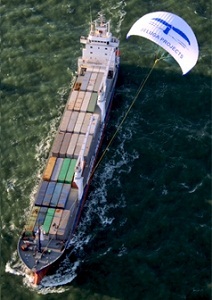
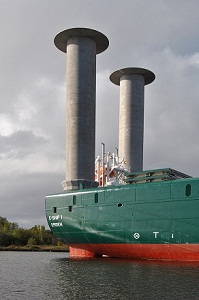
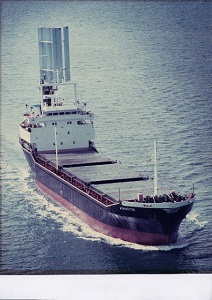
These proposals have several problems. Although kites can easily be installed on any kind of ship and are relatively cheap, it can actually be used in a quite limited range of wind directions and velocities, thus making it suitable for few conditions. It is also difficult to manoeuvre.
Populsion by means of Flettner rotors exploiting the Magnus effect has been tried, but this solution has many difficulties. Problems arise from the need of very large structures (the rotors), making the solution very expensive, difficult to install in ships a posteriori, and with problems of instability. High elevation structures are also a problem for vessels that must travel under bridges and other structures.
Wingsails have as well the problem of being rigid and too high for most applications.
Seagate proposal
The Seagate proposal consists in automatic controlled sails on a standard structure module. One or more modules can be installed on the main deck of commercial ships not necessarily designed on purpose with little modification of the vessel structure.
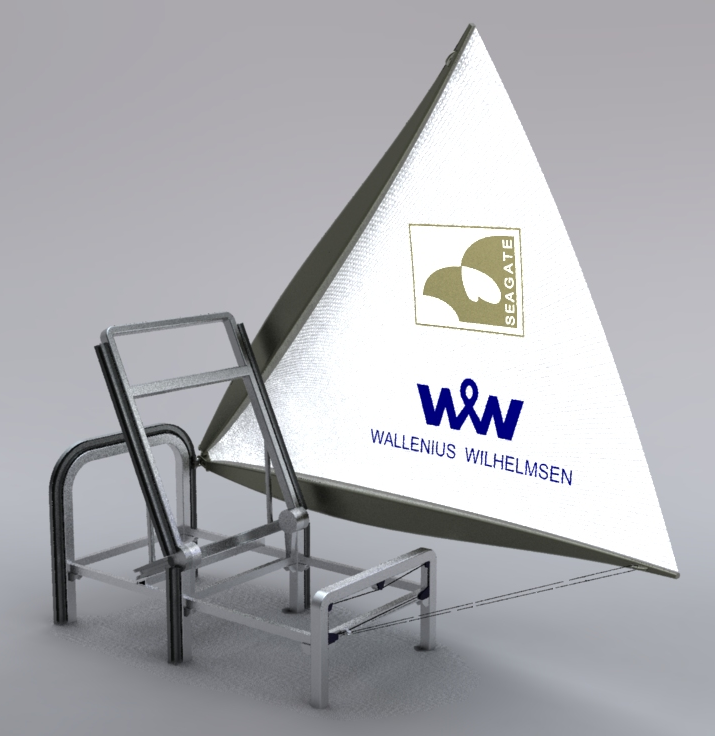
The standard module pictured above can be oriented on the left and on the right and can be closed to minimize dimensions. The structure is developed to exploit wind in most conditions, and with the analysis of statistical data about ship routes it is possible to evaluate a mean fuel sonsumption reduction of 10%.
The sail is delta-shaped and is supported by two symmetrical booms. The booms are attached in two points on two different guides, the first is fixed, the other can move to allow the sail to be opened.
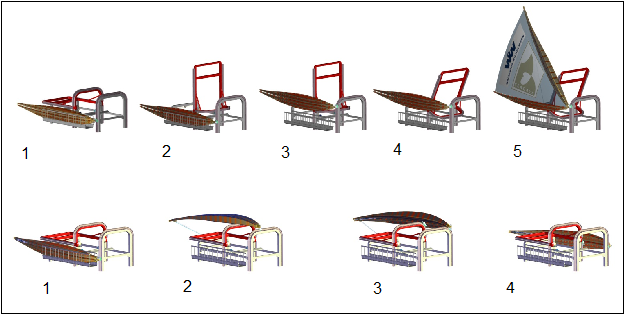
Alternative proposals
Having to develop a model, we first tried to find alternatives to the proposed solution. In particular, we wanted to limit the need for large moving parts. Since the starting of the analysis of alternative designs, though, many problems arose, mainly coming from conflicts of different needs: the sail must have the possibility to open in both sides, and once closed, the heigth of the structure must not exceed a certain value, because ships have to travel under bridges and other structures with limits in heigth. This last requirement make impossible to use the classic mast. It is also required for the sails not to impede the view during manoeuvring operations.
Moreover, the need for a completely automated system means the need for a design that is easy to control and with simple movements. Another big problem is the need for a solid structure to withstand any wind and stress condition.
After several attempts on other designs, finally we decided to study the Seagate module and to address some issues we noticed.